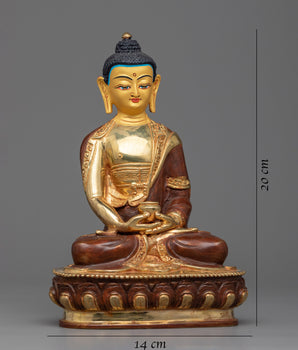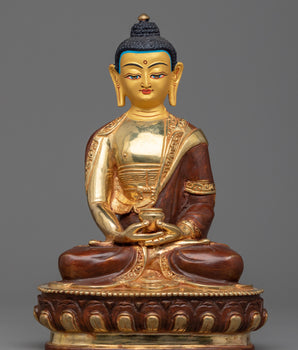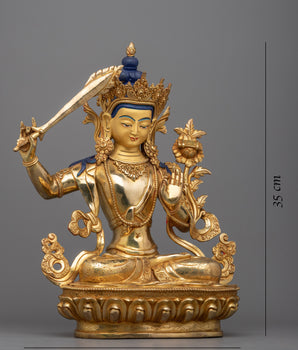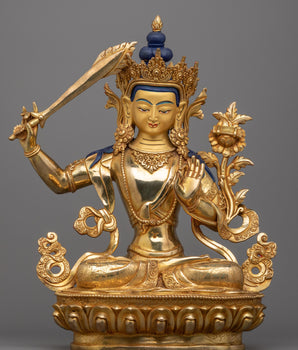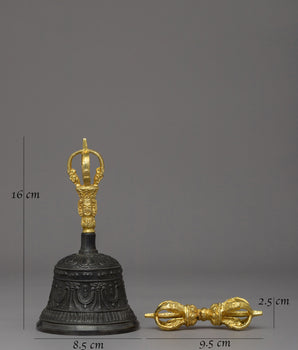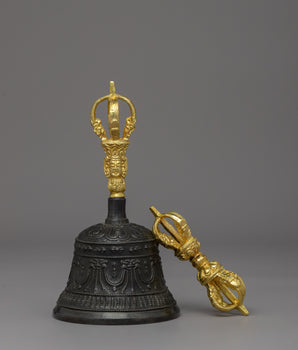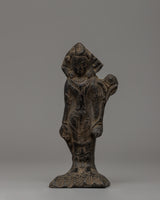
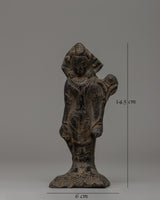
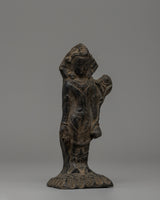
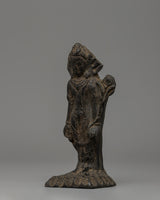
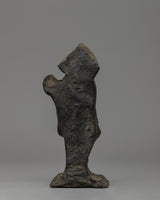
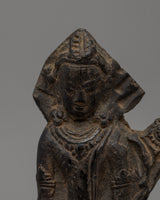
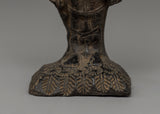
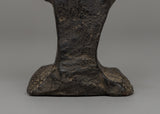
Lokeshwor Statue | Handcrafted 14.5cm Terracotta Tibetan Deity

100% AUTHENTIC

HANDMADE

FREE SHIPPING
Lokeshwor Statue | Symbol of Compassion and Protection
-------------------------------------------
Size: 14.5cm (Height) x 6cm (Width)
Weight: 0.2kg
Materials: Terracotta
-------------------------------------------
About Our Statue :
The Lokeshwor Statue, made from terracotta, is 14.5 cm high, 6 cm wide, and weighs 0.2 kg. It is exquisitely crafted with deep floral carvings, adding intricate detail to the deity's figure. Lokeshwor holds a delicate flower in his right hand, symbolizing compassion and beauty, while his left hand is positioned in the granting mudra, offering blessings and protection. His serene facial expression radiates peace and grace, highlighting the deity's compassionate nature.
Lokeshwor's elaborate crown features leaf-like carvings at the center, giving it a natural and divine aesthetic. The statue's base also includes leaf-like designs and jewel adornments that emphasize the artistry of the piece. Behind the deity’s head, a halo adds to the sacred and divine aura surrounding the figure. Lokeshwor's two earrings further enhance his regal appearance, making the statue a beautifully crafted embodiment of tranquility and spiritual grace.
Introduction To Lokeshwor:
In Mahayana and Vajrayana Buddhism, Lokeshwor, which translates to "Lord of the World," is a highly esteemed bodhisattva who personifies unending mercy. Lokeshwor, also called Avalokiteshvara in Sanskrit, is revered in East Asian, Tibetan, and Nepalese cultures. He is shown in various ways, such as the manifestations with four and a thousand arms, representing his boundless mercy. The chant Om Mani Padme Hum, which stands for enlightenment and universal love, is closely linked to Lokeshwor. He is especially revered in Nepal as Karunamaya and Matsyendranath. According to devotees, invoking the blessings of Lokeshwor results in the development of kindness, wisdom, and freedom from pain.
How do take care of your statues?
Place them at room temperature, avoiding direct sunlight.
Make sure that the area where your statue is placed is completely free of moisture and dust.
Place it at the highest place on your altar after being consecrated by Lama/monks. The best practice is to keep them covered inside a glass cabinet.
Do not use your bare hands or any objects with a rough surface to wipe the face. Directly touching with the bare hand objects can smudge the face, leaving scratches.













